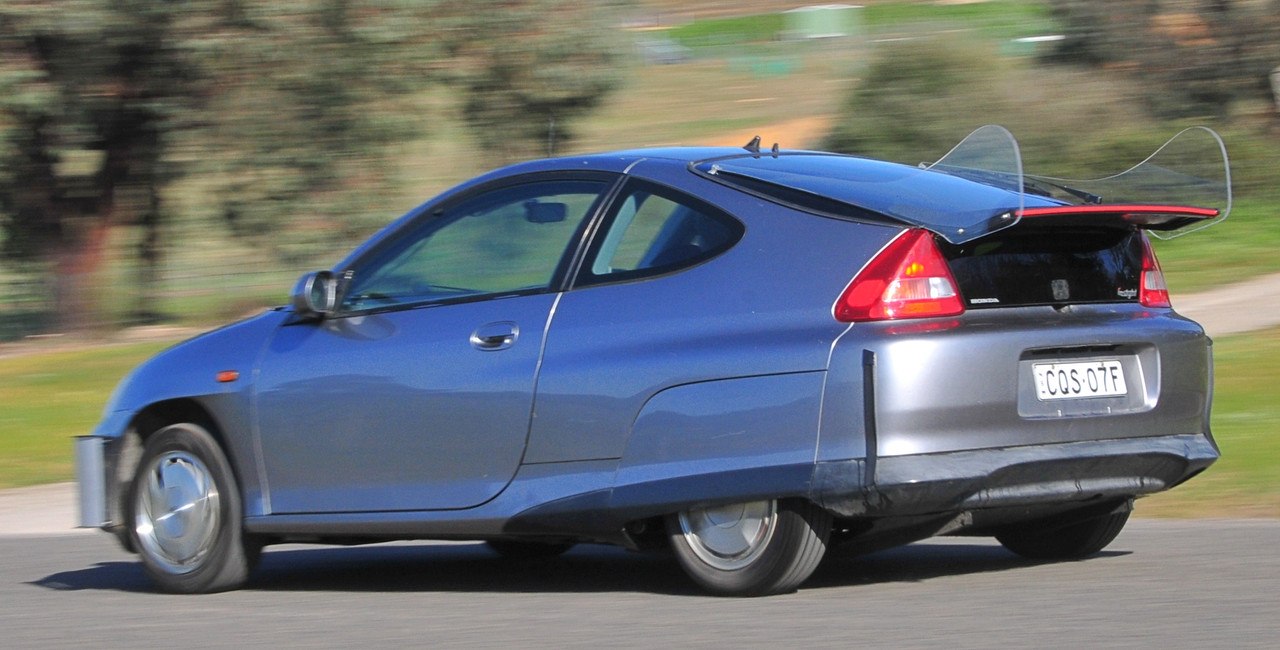Quote:
Originally Posted by 19bonestock88

I didnít plan for much other than a ledge protruding out from the bottom of the bumper (an inch or two) to aid in separating the flow that goes over the top of the car, from the air going under it.
|
You want as much air flowing under the smooth underside of the car as possible, and a splitter moves the 'separation line' downwards, ie more air then goes over the top of the car.
Quote:
|
I used to have a fairly deep air dam but when I switched to the Ion Redline nose I didnít carry it over.
|
Again, you want lots of air under the car. Stopping airflow going under the car is about 30 years out of date!
Quote:
|
The only other goal for the car (other than low drag and exceptional mileage) is for it to be fairly quick. I drive it really hard from time to time and high speed stability and engine cooling is very important. If I can reduce lift while Iím reducing drag Iím all for it
|
My road-car Gen 1 Honda Insight develops measured downforce, and that is effective from about 100 km/h (60 mph) upwards. The car does a GPS-measured 200 km/h (124 mph) - and that's on a shortish straight, not max speed. Almost all of the downforce is achieved by working under the car ie undertrays and diffuser.
High-speed stability is best achieved by moving the lateral centre of pressure rearwards, ie rear fins or a rear wing with large endplates.
My Insight:
